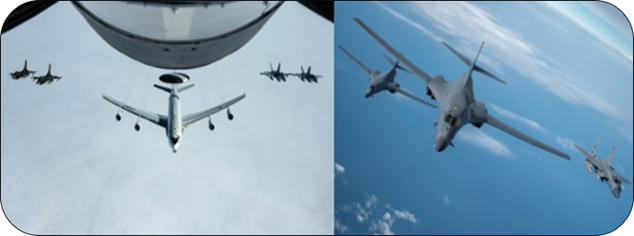Published Dec 30, 2025
By LeMay Center Staff
LeMay Center for Doctrine Development and Education
This month, the LeMay Center highlights Operation NOBLE DEFENDER, a homeland defense operation underscoring the Air Force’s enduring commitment to securing the Western Hemisphere.
Operation NOBLE DEFENDER (OND) is a recurring series of North American Aerospace Defense Command (NORAD) operations that validate our ability to defend the homeland against threats from every avenue of approach. OND leverages joint and multi-national airpower to defend the homeland against evolving threats across air, space, cyber, and electromagnetic domains. Designated as an operation first in 2018, each iteration of OND strengthens and progresses the NORAD mission of aerospace warning, aerospace control, and maritime warning. U.S. Northern Command (USNORTHCOM) contributes additional capabilities to OND events to enhance integrated deterrence across strategic opportunities.

The Service’s role in homeland defense stretches back to the earliest days of airpower. From First Air Force’s establishment in the 1940s, to the early-warning networks developed during the Cold War, and through the 24/7 readiness posture of Operation NOBLE EAGLE after 9/11, Airmen have continuously adapted to protect the Nation. OND extends that legacy by validating binational readiness, exercising modern detection and warning architectures, and demonstrating the ability to rapidly respond to increasingly complex and ambiguous aerial threats.
Why it matters today: Operation NOBLE DEFENDER demonstrates how the Air Force executes the principles of Air Force Doctrine Publication (AFDP) 3-27, Homeland Operations, and the priorities of the 2025 National Security Strategy (NSS) by integrating forward defense, multi-domain awareness, and agile force employment to protect the homeland. By projecting air defense capability to the Western Hemisphere from the Arctic and northern approaches, OND fulfills AFDP 3-27’s call for defense in depth while addressing NSS concerns about long-range and low-observable threats. OND fuses airborne, space-based, and surface sensing capabilities with resilient command and control (C2) for an all-domain warning architecture central to homeland defense. It also demonstrates the agility required to rapidly deploy fighters, tankers, and C2 elements to austere locations, reinforcing the NSS's emphasis on flexible, survivable forces. Finally, the exercise advances defense modernization of the United States and Canada, showcasing the binational integration essential to securing North America against emerging threats.
For more on the Air Force’s approach to Homeland Operations, see AFDP 3-27.You can also explore our doctrine podcast library on iTunes, Spotify, Amazon Music, or at www.doctrine.af.mil.